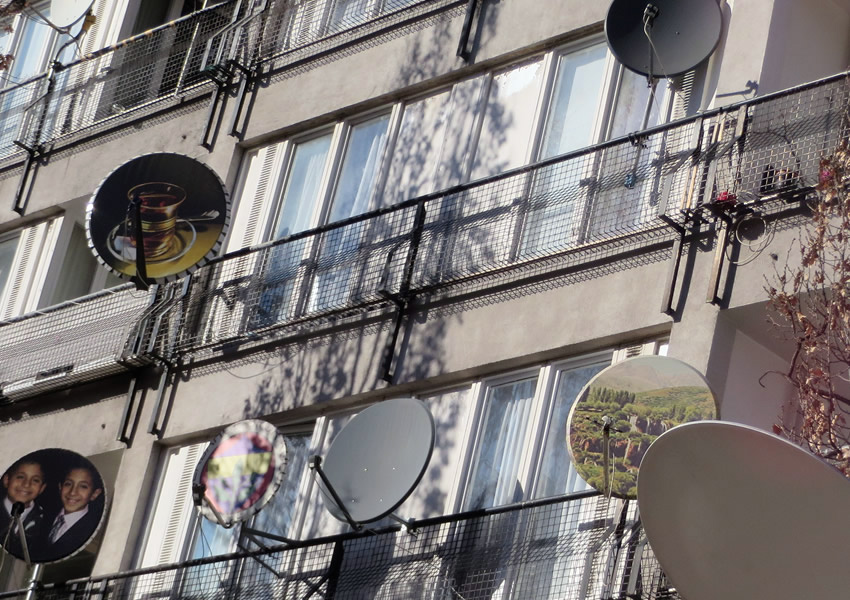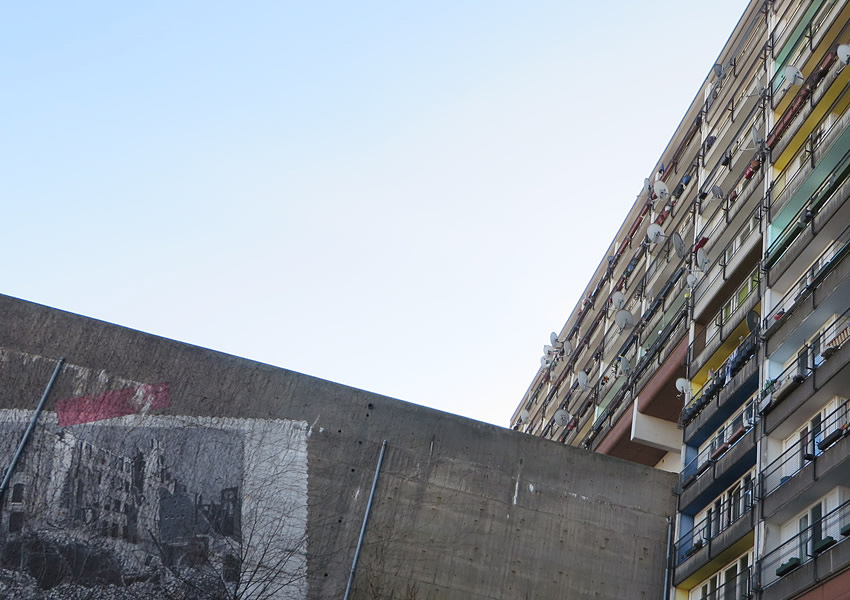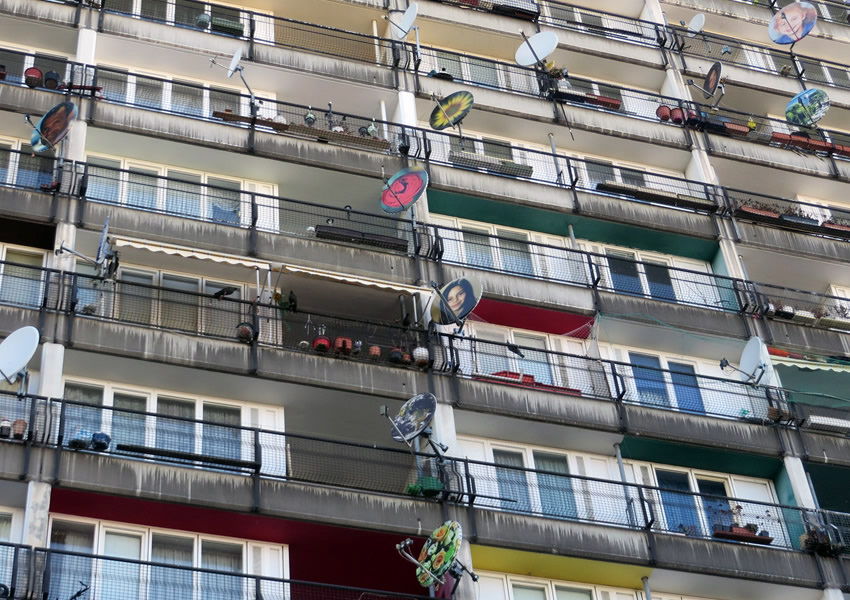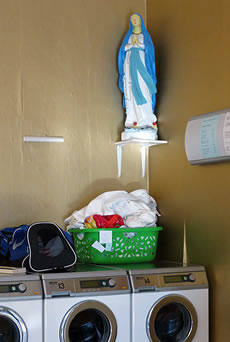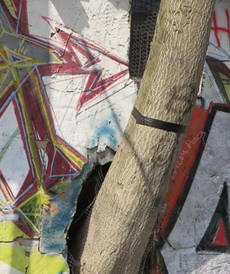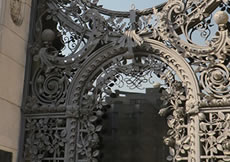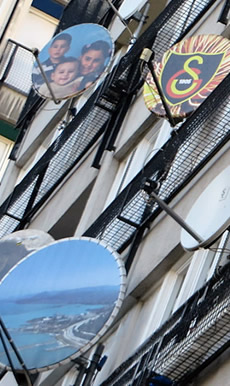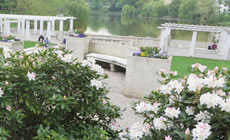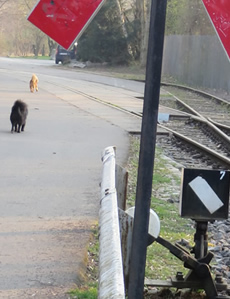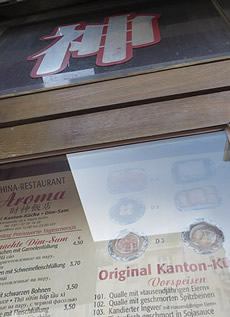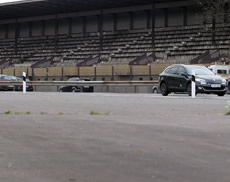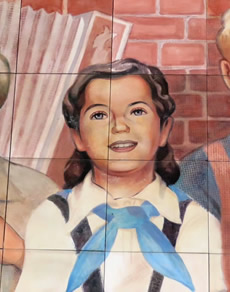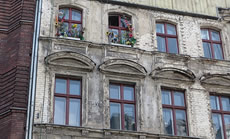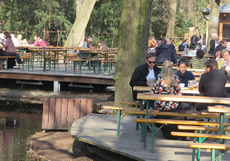Berlin
Brutalism, a bunker - and Berlin's least likely art gallery
The enormous bulk of the so-called Pallasseum housing block rises twelve stories above Pallasstrasse.
Built in 1977 on the site of a former historic sports complex, it quite literally straddles another monolithic concrete structure - a WWII bunker, which was constructed between 1943 and 1945 by forced labourers originating mainly from the Soviet Union.
With a capacity to hold slightly over 4800 people, it's the largest civilian shelter in Berlin.
The housing complex with which it's inextricably associated is also home to over 2000 residents.
Most apartments sport a satellite dish, a mushrooming of discs that sprout from balconies and disrupt the building's austere angularity.
Many, too, are customised with photographic artwork ranging from soft-focus florals to family photographs.
In what constitutes Berlin's most unlikely art space (and even, perhaps, one of its most memorable sights), the personal overwhelms the impersonal; Brutalist architecture is softened by a riot of colour, and the community it houses make their many individual voices felt.
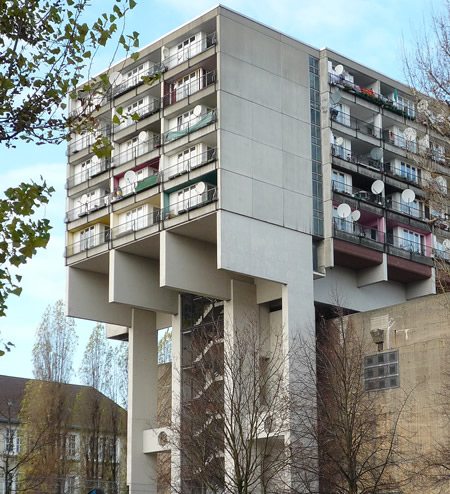
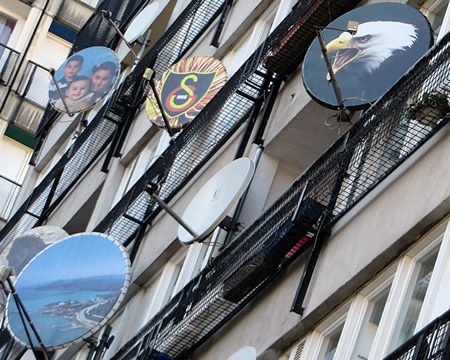
See also:
A singular school
A chocolate box cafe
Pallasseum housing complex: Pallasstrasse / Potsdamerstrasse, 10781 Berlin
